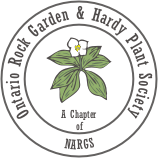Newly collected hydrophilic seeds are in stock: Jeffersonia, Asarum, Sanguinaria and Stylophorum diphyllum, plus other species that require a warm moist stratification before the winter (cold/moist stratification), and can be easily found in the tab above the regular Seed List.
What hydrophilic seeds means? To make a long story short:
Various species have been proven to have hydrophilic seeds, which means that if they are let to dry (like for the majority of other species) and are kept this way for certain periods of time, they lose their viability and will either not germinate upon sowing, or will germinate poorly & over a longer period of time.
So, they have to be either sown soon after collecting, or if they will be used at a later date, they need to be kept moist. Hence our ‘Moist packed category’.
Sowing such seeds soon after collecting or keeping them moist throughout the summer mimics their natural growing conditions, will result most times in 100% germination. It is a lot of extra work but worth doing it.
Sanguinaria canadensis seeds are offered for free (1 pck., while quantity lasts) with any order for other seeds, during the Canada Day promotion.
Orders are accepted until July 5. Afterwards, I have to take care of some personal matters, so the Shop will close for about 2 weeks.


Pachyphragma macrophyllum
Other species that do not have hydrophilic seeds but give best results when sowed during the summer because they require first a warm/moist stratification period, have been added to the listing: Pachyphragma, Cardamine and Helleborus.
In other cases (Pseudofumaria, Pulsatilla) by sowing in the summer it is possible to obtain seedlings this season and thus shorten the time needed for full grown plants.
Helleborus seeds can be sown until late summer/early fall in our climate, but they are listed in case someone needs more seeds in order to optimize the shipping costs.
*Regarding the hydrophilic seeds, since they are freshly collected most will be shipped doubled packed in glassine envelopes/plastic bags (some may be moist packed in vermiculite).
**As usual, the remaining hydrophilic seeds will be moist-packed and available for the fall-winter sale (where enough seeds).
***All orders must conform with the Ordering and Shipping terms.
Those new to the Shop and website, please read more about these species on their pages, also have a look at the Germination page for more info on: Growing Helleborus from seeds, Growing Jeffersonia from seeds, Growing Caulophyllum from seeds…
Many thanks again to all who support BotanyCa in the endeavour of offering fresh seeds of various native and other plants species. We can all make a small contribution to sustain the biodiversity simply by growing a few plants from seeds!
















